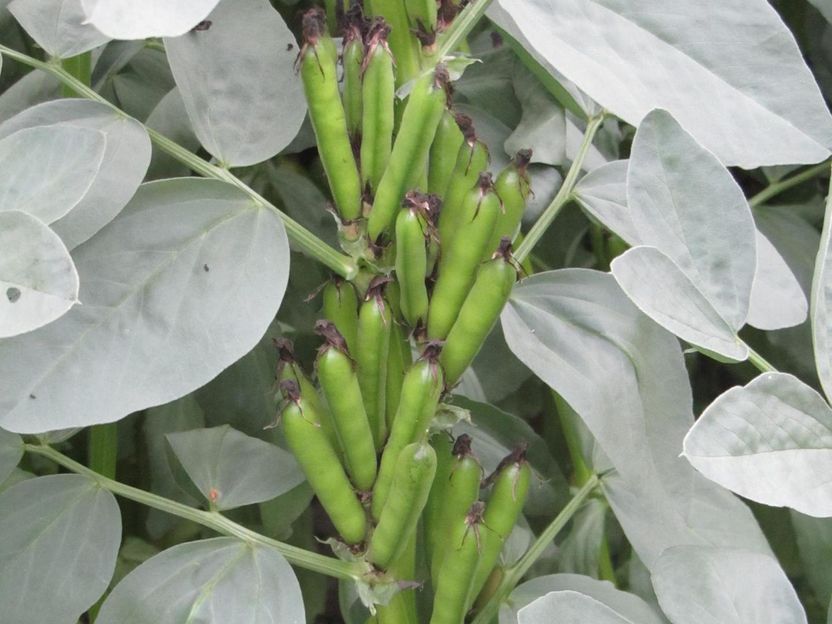Protein crop's potential unlocked by deciphering anti-nutrient biosynthesis
Advertisement
Faba beans are an excellent source of food protein, but about 4% of the world's population are afflicted by favism, which renders them sensitive to the faba bean anti-nutrients vicine and convicine. Now, an international research team has identified the VC1 gene as responsible for the production of these compounds.

Researchers have identified the VC1 gene as responsible for the production of anti-nutrients vicine and convicine that make people sensitive to the faba bean
Frederick Stoddard, University of Helsinki
Faba beans have actually been a source of food protein since pre-historic times, but a fraction of the population, mostly from warm southern regions, cannot tolerate them. Pythagoras and his followers avoided them, and Roman priests of Jupiter associated them with death. Today, we know that faba beans produce the anti-nutrients vicine and convicine, which cause a risk for favism - a condition arising from damage to red blood cells - for susceptible individuals.
Among legumes - the pod-producing family of plants to which pea, chickpea and soybean also belong - faba beans have the second-highest yield globally. They also have the highest seed protein content of the starch-containing legumes and out-perform soybean in cool climates. Faba beans are consequently a prime protein source for facilitating a global switch to a plant-based diet, considered necessary for significant reductions in carbon emissions.
The VC1 gene is responsible for vicine-convicine content
However, when people deficient in a specific enzyme eat a large portion of uncooked faba beans, vicine and convicine can induce abnormal breakdown of red blood cells. The resultant hemolytic anemia, known as favism, has inevitably limited the potential use of faba beans. Although there are a number of faba bean varieties with low levels of vicine and convicine, the gene responsible for this trait was previously unknown.
Now, the scientists have identified the gene responsible for vicine-convicine content. What is more, they have identified the specific mutation within this gene that causes the reduction in synthesis. They found that all faba bean varieties with a low vicine-convicine content, descended from a single accession found in a genebank, had two nucleotides - the "letters" that make up DNA - inserted within the VC1 gene. This insertion disrupts the VC1 function and is the only known genetic source of low vicine and convicine content.
Stig U. Andersen, one of project leaders, says, "Working across disciplines to integrate biochemical and molecular genetic data was key to finally unveiling the genetic source of low vicine and convicine."
The work has been published in Nature Plants and it paves the way for the complete description of the biosynthetic pathway of vicine and convicine, and ultimately for breeding, production and commercial use of faba bean varieties totally free from these anti-nutritional compounds.
The team, comprising leading scientists from Denmark, Finland, Germany, the UK and Canada, are already looking to the future. Fernando Geu-Flores, who led the work, says:
"Now that we understand where these anti-nutrients come from, we can attempt to breed them out completely, thus contributing to food safety and sustainability."
Original publication
VC1 catalyses a key step in the biosynthesis of vicine in faba bean Emilie Björnsdotter, Marcin Nadzieja, Wei Chang, Leandro Escobar-Herrera, Davide Mancinotti, Deepti Angra, Xinxing Xia, Rebecca Tacke, Hamid Khazaei, Christoph Crocoll, Albert Vandenberg, Wolfgang Link, Frederick L. Stoddard, Donal M. O’Sullivan, Jens Stougaard, Alan H. Schulman, Stig U. Andersen & Fernando Geu-Flores
Other news from the department business & finance
Most read news
More news from our other portals
See the theme worlds for related content
Topic world Food safety
Food safety is at the heart of the food and beverage industry. It ensures that the food we eat every day is not only nutritious, but also free of harmful contaminants. From field to plate, the industry monitors and regulates every step of the process with strict quality controls, advanced testing methods and continuous research.

Topic world Food safety
Food safety is at the heart of the food and beverage industry. It ensures that the food we eat every day is not only nutritious, but also free of harmful contaminants. From field to plate, the industry monitors and regulates every step of the process with strict quality controls, advanced testing methods and continuous research.






























































